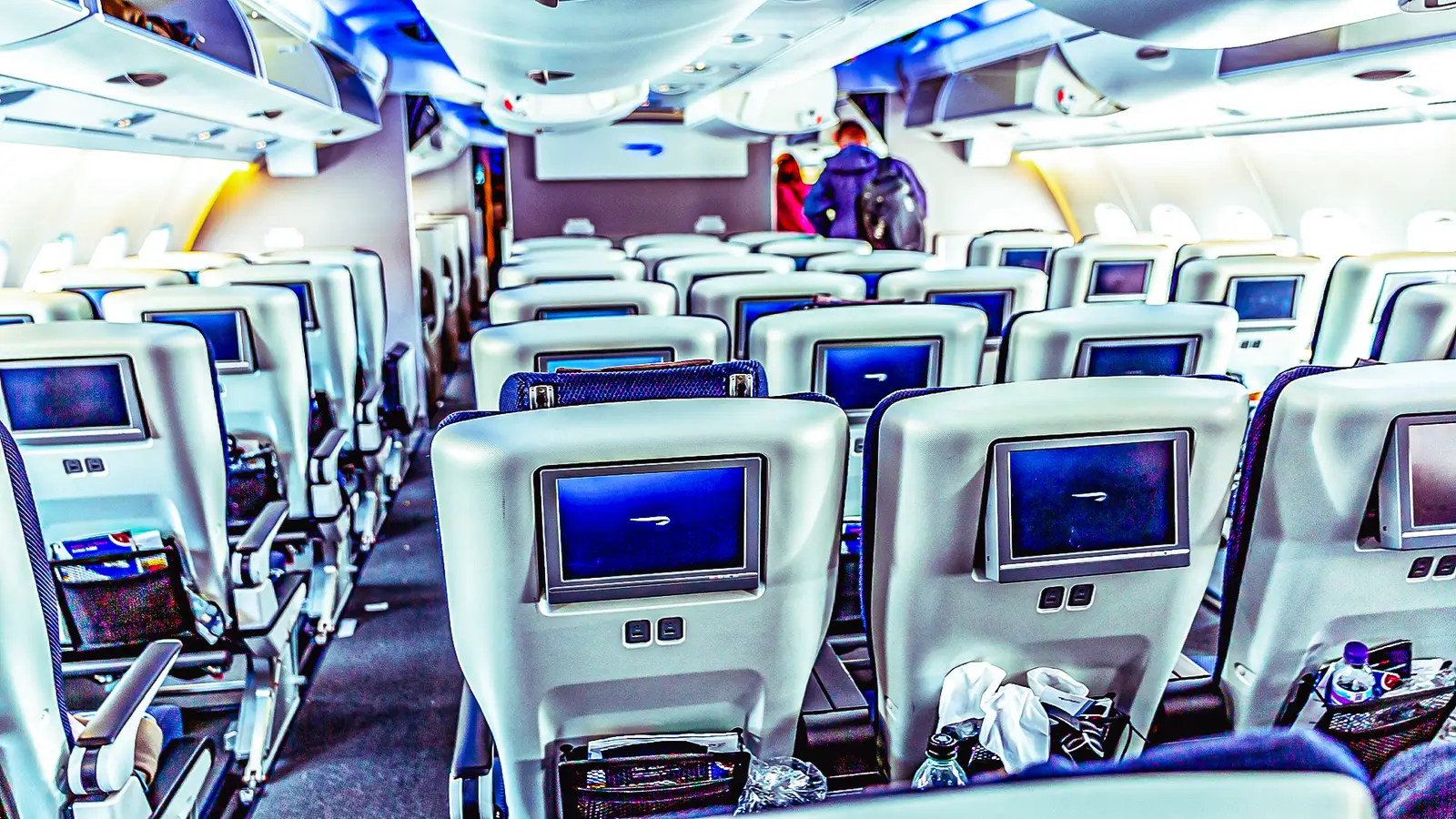Copyright Simple Flying

While only a handful of airlines still operate the super-jumbo Airbus A380, British Airways is set to invest millions into a newly designed onboard first class cabin, with it expected to be ready and onboard by 2026. The design was recently unveiled at the carrier's London headquarters. The hot new design includes benefits such as one of the widest seats in the sky, up to 36.5 inches (194 centimeters), which, of course, transforms into a lie-flat bed that is 79 inches (2 meters) in length. All Aboard The British Airways Airbus A380 British Airways introduced the A380 into its network back in 2013, initially operating an intra-European flight to Frankfurt Airport for familiarization before expanding into its wider long-haul network. The first long-haul service for the airplane was Los Angeles International Airport on September 24, 2013. Like many airlines, the onset of the COVID-19 pandemic saw these double-deckers stored; however, by 2022, the planes were announced to be returning and were reintroduced to the fleet by the end of that year. The A380 is known for being one of the quietest airplanes in the sky, with lower carbon emissions, up to 50% more floor space, and an additional 60% more headroom compared to the Boeing 747-400. Today, British Airways has 12 A380s in its fleet, which are configured for up to 469 passengers, with 14 in First, 97 in Club World (business), 55 in World Traveller Plus (premium economy), and 303 in World Traveller (economy). A new first class is part of the wider retrofit of the A380 refurbishment program, as the oneworld member looks to elevate its first class product and make their mark for the lucrative, high-paying passenger. Kicking Off Before Christmas As already reported by Simple Flying, the cabin retrofit program will account for half of its gross capital expenditure in 2025. This investment spreads not just to the Airbus A380, but also across the Airbus A350 family at the International Airlines Group (IAG) fleet of aircraft. The main goal of the UK flag carrier's A380 retrofit is to elevate the first-class offering, to make it bigger and better than ever before. As IAG mentioned, the ultra-wide seat will be complemented by a cocooned 60-inch (152 centimeter) curved wall, which ensures a spacious, relaxing environment. The product will be designed with elegance and aims to reflect modern British travel. The designs and products are set to be sourced and inspired from all corners of Great Britain and Ireland. Airlines and other subsidiaries that are part of IAG include Aer Lingus, Aer Lingus Regional, Aer Lingus UK, Avios Group, British Airways, BA CityFlyer, BA EuroFlyer, IAG Cargo, Iberia, Iberia Express, LEVEL, and Vueling, and are based out of its registered office in Madrid, Spain. The sheer size of the A380 means that the airplane must remain financially and operationally viable. Premium cabin revenue is vital to airlines and offsets the lower fares offered in economy. It is understood, as per Head For Points, that the new cabin layout will see a boost to the premium configuration, moving between 12 First Class, 110 Club World, 84 World Traveller Plus, and 215 economy class seats, meaning the total configuration is between 421 and 423 total seats. Extra Storage And Extra Privacy Additional features in the new first-class cabin will include a selection of storage options. These include external wardrobes large enough to fit a small suitcase, as well as internal compartments for personal devices or belongings. The wardrobe is intended to eliminate the need for overhead storage, which will be abolished in the new first-class cabin, providing plenty of extra headroom. Sliding doors provide greater privacy for first-class passengers, and a do-not-disturb button can be illuminated to remind the crew that the passenger is resting. The new seat design allows the crew to adjust the passenger's seat from the outside, which means flight attendants do not need to reach over other travelers mid-flight when making up their bed. These designs have been meticulously worked on for the last few years and have gathered input from some of the airlines' most frequent flyers, cabin crew, and engineers to ensure that the design process incorporates every perspective and that the layout works for all. British Airways worked with Executive Club frequent fliers across a range of tiers, including Blue, Bronze, Silver, and Gold. Larger Seats Are Coming As already mentioned, the new 12-seat configuration will replace the current 14-seat design. The inspiration and features are designed to evoke the streamlined design of the Concorde, albeit in these airplanes, and the seats are far bigger than those on the supersonic jet. Every first class passenger will enjoy their own 32-inch (81 centimeters) 4K personal entertainment screen, and with adjustable mood lighting in and around their seat, will also include a 'cinema' mode, making it easier to sit back and enjoy the latest television shows and films from the comfort of their own seat. The seating configuration also allows a friend or family member to join for 'dinner' with the ottoman at the front of the seat, which transforms into another chair at the end of the suite. This is increasingly common in business and first class cabins to allow passengers' acquaintances to join in during meal service. If seated in the center of the cabin, the internal seating divider can be lowered to create a communal area, such as a shared lounge or sleeping space. Overall, the experience could be related to having your own lounge or double bedroom as you're whisked across the globe at 30,000 feet. While some airlines are planning on trimming back their first class offering, British Airways sees the demand for the elite passenger, and noted to CNN Travel that the first class cabin remains integral to the UK airline's onboard product, and there remains a market for premium travel to and from the United Kingdom. “There is a large portion of customers who want that privacy, want that high-end luxury, and we’re very proud to offer it, and it remains a very important part of our network,” the airline noted. Bucking The Trend Of Other Airlines While it would be safe to say that British Airways' new first class A380 product will not quite reach the same heights as Singapore Airlines, Emirates, or Etihad's onboard A380 experience, the carrier is noting that this is big for the European carrier. The design is mindful that the discerning passenger today is not just looking for onboard comfort but for the overall experience. The carrier is starting to retrofit its Airbus A380 fleet before the end of the year, with the first flights expected to take off from early 2026. This will mark the beginning of a wider fleet upgrade, and while it is yet to be clear on which routes these new cabins will head for first, the routes the A380 already operates include: British Airways remains Europe's largest Airbus A380 operator and one of just two European carriers still flying the superjumbo. Neighboring carrier Lufthansa is the other operator on the continent, with a total of eight super-jumbos still in operation. For Lufthansa, the carrier also recently reintroduced the double-decker aircraft to scheduled service after a semi-retirement during the COVID-19 pandemic. For the German carrier, the A380, and subsequently the Boeing 747-800, remain an integral part of the airline's wider international offering. A Snapshot Of The British Airways A380 Fleet Using data from ch-aviation, a comprehensive aviation industry database, identified that the 12 Airbus A380s at British Airways were all welcomed to the fleet initially between 2013 and 2016. The first of the 12 double-deckers was G-XLEA (serial number 95), which arrived at the airline on July 4, 2013. All of these planes were stored from March 2020 through to late 2021 and early 2022, as the aviation market remained subdued during the pandemic. The 11 remaining A380s include G-XLEB (121), G-XLEC (124), G-XLED (144), G-XLEE (148), G-XLEF (151), G-XLEG (161), G-XLEH (163), G-XLEI (173), G-XLEJ (192), G-XLEK (194), G-XLEL (215), and were respectively delivered to British Airways between September 2013 and June 2016.



